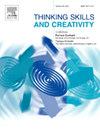基于因果循环图的计算思维集成系统动力学建模
IF 4.5
2区 教育学
Q1 Social Sciences
引用次数: 0
摘要
系统动力学为分析系统随时间变化的复杂性提供了一个有价值的框架。利用因果循环图(CLDs),本研究确定了在将计算思维(CT)融入教育的背景下的两种反馈机制,重点关注了以编码为中心的课程和教师能力发展等杠杆点。该模型显示了强化和平衡反馈回路如何塑造系统行为,表明像基于编码的方法这样的干预措施可以带来直接的好处,但可能会阻碍适用于跨学科问题解决的更广泛的CT技能的长期发展。该研究通过揭示系统动力学中出现的模式来增强分析,包括限制增长的约束,对症状解决方案的依赖,快速修复的意外后果,以及以牺牲其他方面为代价的成功领域的优先级。这些模式强调了解决基础问题的重要性,如教师培训和综合课程设计,以避免掩盖CT在跨学科领域应用的其他关键目标。通过综合cld,该研究展示了影响CT教育的变量和各种动态之间的循环相互作用,为将CT整合到教育系统的潜在场景和故事情节提供了见解。本文章由计算机程序翻译,如有差异,请以英文原文为准。
Modeling system dynamics in computational thinking integration using causal loop diagrams
System dynamics provides a valuable framework for analyzing the complexities of a system over time. Using causal loop diagrams (CLDs), this study identifies two feedback mechanisms in the context of integrating computational thinking (CT) into education, focusing on leverage points such as coding-centric curricula and teacher competence development. The modeling shows how reinforcing and balancing feedback loops shape system behavior, demonstrating that interventions like coding-based approaches can deliver immediate benefits but risk hindering the long-term development of broader CT skills applicable to interdisciplinary problem-solving. The study enhances the analysis by uncovering patterns emerging from system dynamics, including the constraints limiting growth, reliance on symptomatic solutions, unintended consequences of quick fixes, and the prioritization of successful areas at the expense of others. These patterns highlight the importance of addressing foundational issues, such as teacher training and comprehensive curriculum design, to avoid overshadowing other critical goals of CT applications in interdisciplinary fields. By synthesizing CLDs, the study showcases the circular interactions between variables and the diverse dynamics influencing CT education, offering insights into potential scenarios and storylines for integrating CT into education systems.
求助全文
通过发布文献求助,成功后即可免费获取论文全文。
去求助
来源期刊

Thinking Skills and Creativity
EDUCATION & EDUCATIONAL RESEARCH-
CiteScore
6.40
自引率
16.20%
发文量
172
审稿时长
76 days
期刊介绍:
Thinking Skills and Creativity is a new journal providing a peer-reviewed forum for communication and debate for the community of researchers interested in teaching for thinking and creativity. Papers may represent a variety of theoretical perspectives and methodological approaches and may relate to any age level in a diversity of settings: formal and informal, education and work-based.
 求助内容:
求助内容: 应助结果提醒方式:
应助结果提醒方式:


